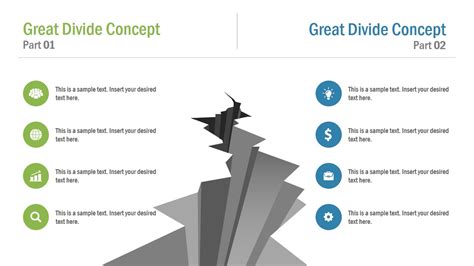Slide & Divide: A Professional's Guide to Efficient Workflow
Slide & Divide, a technique often employed in project management and task organization, offers a powerful method for streamlining workflows and enhancing productivity. This isn't just about neatness; it's about strategically organizing tasks to optimize efficiency and minimize wasted effort. This guide explores Slide & Divide for professionals, delving into its practical applications and benefits.
What is Slide & Divide?
Slide & Divide is a visual workflow management technique. Imagine a project as a series of interconnected tasks. "Sliding" refers to the smooth transition from one task to another, minimizing interruptions and maximizing momentum. "Dividing" involves breaking down larger, complex tasks into smaller, more manageable sub-tasks. The combined effect creates a streamlined and efficient workflow.
This method is particularly beneficial for professionals who juggle multiple projects or complex tasks. By breaking tasks into smaller, digestible units and arranging them in a logical sequence, professionals can better manage their time, reduce stress, and increase overall productivity.
How Does Slide & Divide Work in Practice?
The beauty of Slide & Divide lies in its adaptability. It can be applied using various tools, from simple to-do lists to sophisticated project management software. Here's a practical approach:
-
Identify the Project: Clearly define the overall project goal and its key deliverables.
-
Break Down Tasks: Divide the project into manageable tasks. These should be specific, measurable, achievable, relevant, and time-bound (SMART).
-
Prioritize Tasks: Organize tasks based on urgency and importance. Utilize methods like the Eisenhower Matrix (urgent/important) to prioritize effectively.
-
Sequence Tasks: Arrange tasks logically, considering dependencies. Some tasks might need to be completed before others can begin.
-
Visualize the Workflow: Use a visual aid, such as a Kanban board, Gantt chart, or even a simple flowchart, to visualize the workflow. This helps in identifying potential bottlenecks or dependencies.
-
Slide and Divide in Action: As you complete a task, "slide" smoothly into the next one. If a task proves too large, "divide" it into smaller sub-tasks. This iterative process ensures continuous progress.
Benefits of Slide & Divide for Professionals
-
Increased Efficiency: By breaking down tasks, you can focus on smaller, achievable goals, leading to a sense of accomplishment and sustained momentum.
-
Improved Time Management: The structured approach allows for better allocation of time and resources.
-
Reduced Stress: Completing smaller tasks regularly reduces overwhelm and anxiety associated with large projects.
-
Enhanced Collaboration (Team Projects): Slide & Divide can be effectively utilized in team projects, ensuring smooth task delegation and progress monitoring.
-
Better Project Visibility: Visualizing the workflow provides a clear overview of project status, making it easier to identify and address potential issues.
What Tools Can I Use for Slide & Divide?
The methodology of Slide & Divide isn't tied to any specific software. Many tools can be used to support this workflow:
-
To-Do List Apps: Simple apps like Todoist or Any.do can be used for basic task management and prioritization.
-
Project Management Software: More complex projects may benefit from tools like Asana, Trello, or Jira, which offer advanced features like task dependencies, collaboration tools, and progress tracking.
-
Kanban Boards: These visual tools are perfect for tracking progress and visualizing workflows. Both physical and digital Kanban boards are available.
-
Gantt Charts: Useful for visualizing project timelines and dependencies between tasks.
Frequently Asked Questions (FAQ)
Is Slide & Divide suitable for all projects?
Yes, Slide & Divide can be adapted to various project types, from small individual tasks to large-scale team projects. The key is to adapt the level of detail to the complexity of the project.
How do I deal with unexpected tasks or interruptions?
Unexpected tasks should be evaluated and integrated into your existing workflow. Prioritize them based on urgency and impact, and adjust your schedule accordingly. If an interruption occurs, make a note of where you left off and return to your primary tasks as soon as feasible.
How can I measure the effectiveness of Slide & Divide?
Measure your progress by tracking task completion rates, project deadlines, and overall productivity. Compare your performance before and after implementing Slide & Divide to assess its effectiveness.
What if I get stuck on a task?
If you encounter difficulties, break the task down further into even smaller sub-tasks. Seek assistance from colleagues if needed or re-evaluate your approach. Don't hesitate to adjust your strategy as necessary.
By understanding and implementing the principles of Slide & Divide, professionals can cultivate a more efficient, productive, and less stressful work environment. Remember, the key lies in adapting the technique to your specific needs and consistently refining your workflow.

